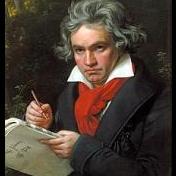Leaderboard
Popular Content
Showing content with the highest reputation on 12/31/2021 in all areas
-
2 points
-
ok well my best is.. well, way better than that, I dont know why you think youre coming from a position of such authority lol.2 points
-
Really? It seems to have said a few things that needed to be said even if I couldn't read several posts that led to the exchanges. AND suggested to the o/p: learn more about your craft preferably with a guiding hand/ear. Happy New Year to you too and everyone for that matter.1 point
-
1 point
-
1 point
-
I think we reached consensus a while ago, despite ACO's hilarious outbursts (he's just an incoherent mess when it comes to me, I'm THAT important to him apparently) I think there's a wealth of material you can study that gives you all the pragmatic means to get stuff sounding in various ways, so it'd a good idea to start there. Beyond that's it's like quinn and jan-peter said, you need to actually put the effort into studying stuff to get better. I don't think we're disagreeing at all. Hell I even said that ACO's opinion on rhythm being important is valid, despite being a little on the superficial side. But yeah.1 point
-
My stance is that music is both as anything which is a craft necessarily, and pretty much by definition involves a merger of formula/technique and unique aesthetic sensibilities (art). Neither is truly whole without the other. All of the great artists, living or dead, mastered both.1 point
-
Cope (seethe) harder But surely he is then looking for something that is tangible? Things that connect the great melodies of the great melody writers? This is why I don't see the value in saying "just study scores" because that should be a given. Studying scores you like should just be a default thing. The entire purpose of music education is (or at least was supposed to be) to pass on to new composers that knowledge you're expecting them to glean from score study and save them a lot of time instead of forcing them to start at square one and rediscover the wheel all the time. Why not just give them those answers? The harsh reality is, the only reason I can see people not defaulting to that is because they don't know themselves. As an example, it would put someone who wants to write like John Williams "Heroic" themes a lot more on the right path to talk about the kinds of voice-leading and disjunct motion, rhythms, etc. of those melodies than it is to just say "study John Williams". Earlier, there was some screeching about "correlation = / = causation", a common Clown Academy talking point meant to discourage pattern recognition entirely. What this fails to account for is the existence of control groups, which expose that the correlation is indeed the causation. When one batch of melodies is generally agreed to be good and they all share X traits, but the second group of melodies generally agreed to suck don't contain those traits: It is because of the traits shared in the former group. And we have a LOT of music to examine over literally centuries that developed into a specific craft and frankly, a science unto itself. OP will find that there is consistency, outside of pure stylistic considerations, between what makes a great Metal tune and a great Romantic piece. They require no explanation, no particular "context" or exposure to be enjoyed by most people: They just know it's good right away. That's what one needs to master if they want to write music. Not pursue abstract and "emotional" concepts that (allegedly) appeal to a very small minority of people but is typically met with visceral disgust from the rest of the people. And OP explicitly stated he is not out to appeal to said minority. That really sums up my feelings on this whole thread.1 point
-
Like I give a damn what you are "skeptical" of or not. You're a fuking moron, dude. That's why I and most of the active members here have you on ignore. Yes, I wrote a complete ebook and course to teach beginners (like yourself) about writing melodies with the same kind of energy and catchiness of something like Star Wars, the different theory and technical considerations and putting my own 20 years of writing music experience, which I got my first professional jobs when I was still in highschool, and perspective into it and don't feel inclined to give it away for free on a forum post. I know that irks you since you're one of these commie types, which is also why you loathe the notion that anyone on here is superior to you in skill (almost everyone is); that you're not "equal". But hey, why don't you just give that knowledge away for free in this thread, then? Because you don't know sh!t, and are of no help to anyone, that's why. I don't have to justify or prove anything to the likes of you. Though I find this claim of yours hilarious since you doubtlessly consume tons of the same recycled corporate garbage yourself. Here's this free market thing in action: Don't buy it, a$$hole. Hey, let's call up every teacher in wherever you live and make sure they have your approval before offering lessons, shall we? They'd tell you to go fck yourself, as you rightly should. If it's "Just another book on the pile" maybe you should reach into that pile, because it's obvious from your work that you never have. Now fck off, crack open another bottle of soylent and go make another lo-fi ambient tune or meager attempt at rock music that still, after all this time, sounds like a 13-year-old who just pirated garage band whilst acting like some snide, accomplished guru.1 point
-
I have listened to Symphony no. 5 and Symphony no. 6 by Beethoven and I noticed that they are like Yin and Yang, polar opposites on the outside, but deeply connected on the inside. Symphony no. 5: "Fate Symphony" - Yin Symphony no. 5 is like the Yin in Yin and Yang, it is the darker of the two symphonies. It starts in C minor and a lot of the key areas, both tonicizations and modulations, can be traced back to C minor via close relations. D major? It is the dominant of the dominant. F minor? That's the subdominant. C major? That's the parallel major. The first movement alone has this feel to me of wanting to resolve to a major key, but every time it reaches a major key, it gets crushed by C minor yet again. Even the second movement, which is in a major key, still has this battle of dark vs light feeling to me, where Ab major is the darker of the 2 major keys and C major is the brighter of the 2 major keys. The Scherzo, like the first movement, is in C minor, but it is a more mysterious C minor than the powerful C minor of the first movement that crushed every instance of major keys in sight. Over the course of the Scherzo, C minor becomes less and less powerful until it barely even makes a ripple as it finally resolves to a major key like the first movement alone wanted to do. It is as though Beethoven said: Symphony no. 6: "Pastoral Symphony" - Yang This symphony is a far cry from the drama of the fifth symphony. Instead of minor being predominant, it is rare. More of the key areas in this symphony, minor ones included, are distantly related. For example, the Bb to D modulation in the development of the first movement is an example of chromatic mediants. D major is also distantly related to F major via the same relationship, chromatic mediants. E major, it too appears in this symphony and it is a chromatic mediant of C major, the dominant of F major. A major is also a chromatic mediant of C major and is a key area in this symphony. The only real drama that occurs in this symphony is the stormy fourth movement. And even then, it is very brief, lasting only about 4 minutes, the last minute of which is the transition back to major from the minor key of the fourth movement. Deep connections between the 2 symphonies Despite these 2 symphonies being polar opposites on the outside, there are multiple deep connections between these 2 symphonies. First off, these symphonies were composed around the same time as each other and around the same time as Beethoven's fourth piano concerto. These symphonies were also premiered on the same day as each other and the same day as the fourth piano concerto in a big concert that was 100% Beethoven works. But time is not the only connection here. There are other connections too. Another connection that these 2 symphonies have is that they are both primarily based on motives. The interval of a third is also a connection between these 2 symphonies. In the Fifth Symphony, this mainly presents itself as the Fate Motif, though a lot of the key areas of the symphony can also be related by thirds. In the Sixth Symphony, this interval of a third mainly presents itself as Chromatic mediant relationships between keys. The way the motives get developed in the Development sections of the first movement of these consecutive symphonies is also similar. In both symphonies, a motive gets developed for a while until it breaks down into 2 notes. In the Sixth Symphony, this development is mainly through repetition and imitation. In the Fifth Symphony, this development involves a lot more changing of direction, harmony, and orchestration. Also, in the Fifth Symphony, this breakdown proceeds further than it does in the Sixth Symphony. It goes from 2 notes to 1 note, almost spelling doom for the Fate Motif, before Beethoven brings back the energetic eighth notes and the rhythm of the original Fate Motif. Both symphonies also involve parallel key relations. In the case of the Sixth Symphony, this is between F major, the key of both the first and final movements and F minor, the key of the fourth movement and that is the only place where I really hear a parallel major/minor relationship. In the Fifth Symphony, this parallel key relation is between C minor and C major and it is present in all the movements as foreshadowing of the C major finale in the first, second, and third movements, and as a C minor Scherzo moment in the Finale.1 point


